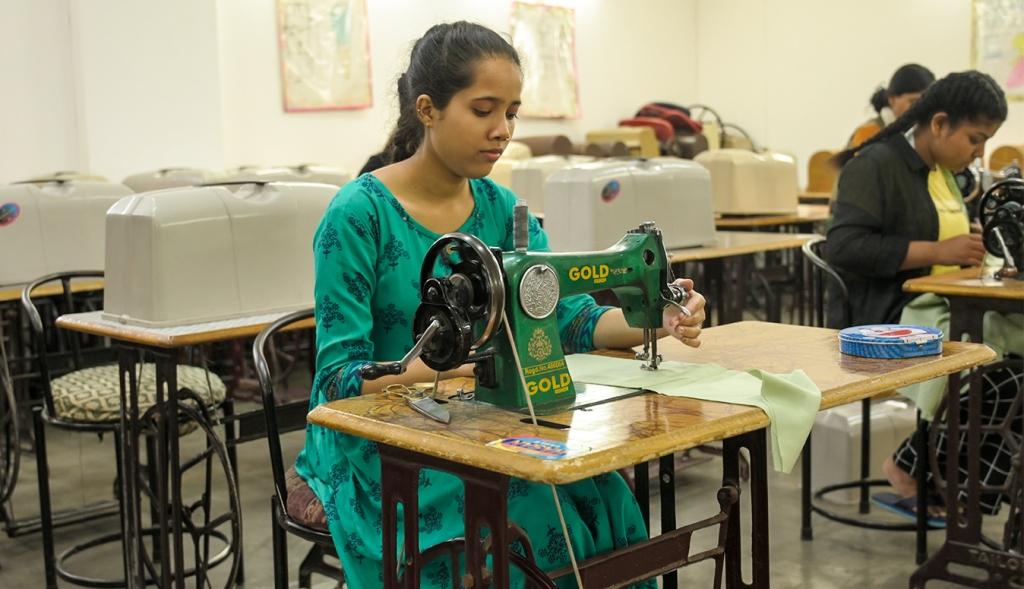India has the largest youth population, about 120 million of whom are girls – that’s about 30% of America’s population. About 82% of these 120 Million girls will grapple with dire poverty, 40% of them will not complete their school education, 23% will become child brides, and 11% will be forced into becoming teen mothers.
Let me break it down again for you – that’s 98 Million of these girls – almost the entire population of Vietnam will live in extreme poverty. 48 Million girls – roughly Spain’s population won’t finish schooling. 27 Million girls – i.e., Australia’s population will end up becoming child brides. Finally, 13 million girls — roughly the population of Belgium — will be forced into becoming teen mothers.
The opposite of this grim reality according to some estimates claiming that championing women’s empowerment can contribute to upwards of a $28 Trillion USD increase in global GDP value.
Taking a stand for Adolescent Girls Everywhere
Adolescent girls often represent one of the most powerful yet undermined demographics for creating lasting social change. By their very nature, adolescents are at a pivotal stage of development — standing on the threshold between childhood and adulthood – and this is exactly when their life-long perspectives and opinions will solidify. Equally, it is important to understand how forwarding-moving and passionate this particular age group can be; especially for adolescent girls who can break generational long curses of choosing to be instead educated, choosing a high-paying profession, choosing to say no to early marriage or teenage pregnancy. Such decisions not only change the life trajectory of their families but also their overall communities, creating girl and women role models for the next generation to follow.
Women are often the backbone of a community, rural or otherwise. So levelling the playing field when it comes to economic inclusion, empowerment, and most importantly parity in decision-making can break both the glass ceiling and also the stereotypes of traditional gender roles.
The Importance of Skill Development for Women & Girls
It is prudent that 21st Century Skill Development and Economic Inclusion for girls should be an integral part of not only the Government agenda but also for key-change agents like businesses, nonprofits, and philanthropic foundations. Fortunately, in the last decade or so we have seen a massive landslide towards such initiatives, especially by Corporate Social Responsibility verticals all across who have created Women in STEM programs, an array of boot camps/workshops/certifications promoting vocational and technical training targeted towards women and girls. Furthermore, a lot more higher-education scholarships are available for women and girls who want to become engineers, management professionals, and most wonderfully even entrepreneurs.
This has created a shift of the next generation of workforce from a representation of women in the junior rungs of an organisation, more women in mid-level management, and wonderfully the advent of women leaders in the boardroom, in VCs, as well as CXOs and founders of billion-dollar companies.
We are now hopeful to witness and are already witnessing a cadre of women and girls who are not only becoming role models but also are investors themselves of their gender, getting involved in sponsorships and outcome-based mentorships of their juniors both in their organisations, the academics and mostly essentially in their own families and communities.
A Mandate for Investment in Women & Girls
Often when it comes to traditional vocational skilling programs like manufacturing, IT roles, and grassroots livelihood opportunities; an overwhelming majority of participation seems to be by cis-men. This is firstly because of the expectation for only men to be educated, and earning and one whose world is to be outside the four walls of their homes. The reality is different for our girls and women who often have no role models for them, their families, or their communities – the elders dread sending their girls out to travel long distances to attend certification courses or even jobs without any male chauffeur.
The social impact programs have now realised this and are battling the conundrum of accessibility of girls and women through typing up with local grassroots nonprofits, the village school, the anganwadis, and the panchayat. People from the community, and most importantly people with authority in the community raising their voices about the importance of educating their girls and women can go a long way in dismantling gender-regressive norms and most importantly creating role models.
Additionally the expansion of technology to the remotest corners of our country, it has brought both parity and the saddening gender digital divide. It’s quite well-known that India houses about half of the world’s gender digital divide phenomena; with always men who have the financial independence to buy smartphones and ultimately computers to connect with the larger world.
The patriarchal conditioning often states that women and girls should be hidden away from the world with opinions going from their own dignity and virtue being tied up with that of their communities, protecting them for the lecherous schemes of bad men and most importantly firmly believing that women and girls should never as equal as their male counterparts.
Ergo, it is crucial for girls especially from socioeconomically disadvantaged to have the understanding of life and leadership skills – of financial literacy, of women’s rights, of right to their bodies, of right to speak freely about menstruation and menstruation hygiene without shame, of learning to raise their voices and demand agency, of opportunities to become community leaders who can push and break archaic expectations of women only becoming homemakers, of becoming child brides, of teenage mothers, of living their entire lives on the opinions of their male counterparts.
With careful and patient counselling where the entire community and most importantly the men associated with the social impact programs of women empowerment – one can create powerful allies by breaking down their fears and offering them a new perspective.
Investments in women and girls should always start from their own families, their own communities first as this will lead to creating of advocates of gender-equity which will be self-sustainable as the motive of any social impact program – either CSR or nonprofit have always been to pass on the batton eventually to the communities themselves.
Tech for Good for Women & Girls
We have already spoken about the importance of circumventing the risks of gender digital-divide and this can only be done by affirmative action of launching of Women in STEM programs, including a digital component in the programs itself to advocate for 21st Century skills. Furthermore, it is essential that nonprofits, CSR and government should have schemes and scholarships for women and girls to purchase computers and smartphones. This should not only be promoted for educational purposes but also the essentiality of being a human being who wants to be connected, who is curious about the world. There should be a case for normalisation of pursuing digital entertainment for women and girls as it is for their male counterparts – a core component of human rights that the social impact community often misses out on.
Career Counselling & Job Placements for Women & Girls are Mandatory
In tandem with the infusion of 21st Century education for women and girls, we cannot forget the essentiality of career counselling and job placements for first-generation girl learners. Most of them wouldn’t have any idea about which professions to choose, how to apply for jobs or how to navigate a male-dominated professional world. The importance of internships, especially paid, long-term and high intensity intensity should be a tenant of success for youth – no matter their gender. It is all over more essential for girls to understand what will be the bottlenecks and gatekeepers of career success. Additionally, we should be cognizant that we don’t stereotype girls in often low-paying pink-collar jobs but give them access to a wide range of choices.
Overall, as we march forward towards a new year of our 21st Century the case for gender-equity seems more solid than it has ever been.
Views of the author are personal and do not necessarily represent the website’s views.



